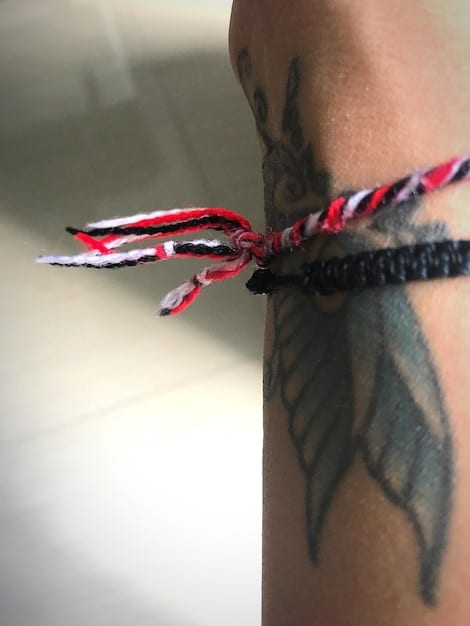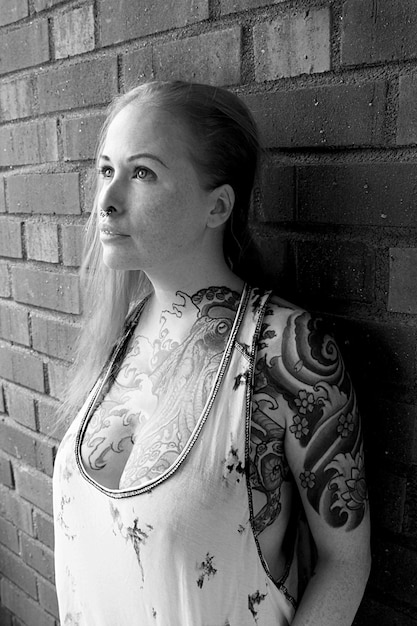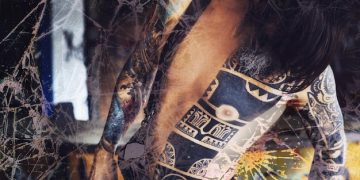Body Modification as Art: US Subcultures & Their Cultural Impact

Body modification as art transcends simple aesthetics, serving as a profound form of self-expression and cultural identity within various US subcultures, reflecting deep-seated values and historical narratives.
In the realm of self-expression, few avenues are as visually striking and culturally rich as body modification. Across various US subcultures, these practices have evolved into powerful forms of art, carrying profound cultural significance.
Understanding body modification as art
Body modification goes beyond mere decoration; it’s a narrative etched onto the skin, a statement of identity. Exploring this art form provides insight into the unique values and beliefs of the subcultures that embrace it.
From tattoos and piercings to scarification and implants, each modification carries its own story, deeply intertwined with the individual’s journey and the collective ethos of their community.
Historical roots
Understanding the historical roots of body modification is crucial to grasp its artistic significance. Many of these practices have ancient origins, often linked to spiritual rituals and rites of passage.
- Ancient civilizations: Tracing back to indigenous cultures, body modification served as a marker of status, identity, and spiritual connection.
- Tribal practices: Scarification, piercing, and tattooing were integral parts of tribal societies, signifying membership and life events.
- Modern revival: The resurgence of these practices in modern subcultures is a nod to tradition, blended with contemporary artistic expression.
This rich history provides a foundation for understanding the artistic depth and cultural significance of body modification in the US today.

Ultimately, the term ‘body modification art,’ which is very vast in the U.S., is a result of many years, if not centuries, of the development of the world we live in today.
The tattoo subculture
Tattoos, perhaps the most widely recognized form of body modification, hold a prominent place in US subcultures. The tattoo subculture has roots that stretch far back in time, especially in the West.
They are more than mere images; they are personal emblems that tell stories of love, loss, and identity.
Artistic styles and influences
The tattoo world is a diverse tapestry of artistic styles, each influenced by distinct cultural and historical trends.
- Traditional American: Bold lines and iconic imagery characterize this classic style.
- Japanese Irezumi: Intricate designs and symbolism rooted in Japanese folklore define Irezumi.
- Blackwork: Striking patterns and geometric designs create a bold aesthetic.
- Realism: Hyper-realistic depictions transform skin into a canvas for breathtaking artwork.
These diverse styles reflect the artistic evolution and cross-cultural influences that have shaped the tattoo subculture.
Tattoos, while sometimes seen as taboo, should be regarded as a way to commemorate a certain time in a person’s life, and even as an actual type of art.
Piercings: Beyond adornment
Piercings, another popular form of body modification, extend beyond mere aesthetics. The art that can be expressed by them is often undervalued.
They represent rites of passage, cultural affiliation, and personal expression.

Types of piercings
The types of piercings are varied:
- Ear piercings: Versatile and customizable, from simple lobes to intricate cartilage piercings.
- Facial piercings: Nose, septum, and eyebrow piercings make bold statements.
- Body piercings: Navel, nipple, and surface piercings allow for unique self-expression.
Each type of piercing provides a unique opportunity for personal expression and artistic adornment.
Piercings may even carry significance for one’s own body, as the ancient styles go back to beliefs regarding pressure points and even spiritual practices.
Scarification and cutting
Scarification and cutting involve creating deliberate scars on the body, often resulting in deep and intricate designs.
This practice has deep roots in tribal cultures and is often used to mark significant life events or cultural affiliations.
Symbolism and cultural context
Scarification carries deep symbolism within various cultures, denoting:
- Rites of passage: Marking the transition from childhood to adulthood.
- Cultural identity: Signifying membership within a specific group or tribe.
- Personal narrative: Etching significant life events onto the skin.
The practice requires tremendous skill and understanding of the body’s healing processes. As an artform, it should be respected and admired.
Scarring, while often misunderstood, is an important part of body modification, and further signifies its purpose as an art form. Much of today’s body modification and piercing/tattoo culture derive from older roots of scarification.
Implants and subdermal art
Implants and subdermal art involve inserting objects beneath the skin to create three-dimensional shapes and textures.
This form of body modification pushes the boundaries of artistic expression, transforming the body into a living sculpture.
Ethical considerations
Given the invasive nature of implants, it is crucial to consider the ethical implications:
- Informed consent: Ensuring individuals fully understand the risks and benefits.
- Qualified practitioners: Seeking out skilled and reputable artists.
- Health and safety: Prioritizing hygiene and sterile procedures to prevent infections.
Ethical considerations are of paramount importance in this evolving field of body modification.
Not all body modification art has to be permanent, as the goal is simply to have temporary self-expression.
Body modification as a form of resistance
For some, body modification serves as a powerful form of resistance against societal norms. The individual in this case is sending a clear message. It is a very overt form of expression.
It allows individuals to reclaim ownership of their bodies and challenge conventional beauty standards.
Challenging beauty standards
Through unconventional modifications, individuals can subvert societal expectations:
- Defiance of norms: Rejecting traditional beauty ideals in favor of personal expression.
- Reclaiming identity: Asserting individuality in a world that often demands conformity.
- Empowerment: Taking control of one’s body and aesthetic choices.
Body modification becomes a tool for self-empowerment and a statement of defiance against restrictive norms.
Oftentimes, the more extreme forms of body modification carry some political sentiments as people become more expressive and avant-garde.
| Key Point | Brief Description |
|---|---|
| 🎨 Tattoo Subculture | Diverse tattoo styles reflect personal stories and cultural influences. |
| 💍 Piercings | Various types of piercings serve as rites of passage and personal expression. |
| 🔪 Scarification | Creates scars to mark life events and convey cultural identity. |
| 👽 Implants | Subdermal implants push the boundaries of artistic expression on the human body. |
FAQ
▼
Body modification refers to the deliberate altering of the human body for aesthetic, cultural, or personal reasons. It includes practices like tattoos, piercings, scarification, and implants, each with its own historical context.
▼
Individuals engage in body modification for various reasons, including self-expression, cultural identity, spiritual beliefs, and rebellion against societal norms. It’s a way to reclaim ownership and express individuality.
▼
Risks associated with body modification include infections, allergic reactions, scarring, and nerve damage. These risks can be minimized by seeking qualified practitioners, practicing proper aftercare, and ensuring sterile procedures.
▼
Tattoos serve as visual markers of subcultural affiliations. Each design, style, and placement reflects the shared values, beliefs, and history of specific communities. They create a sense of belonging and shared identity.
▼
Ethical considerations in extreme body modification include informed consent, psychological well-being, and the qualifications of practitioners. Ensuring the physical and mental health of individuals undergoing these procedures is crucial.
Conclusion
In conclusion, **body modification** as art is a multifaceted phenomenon within US subcultures, deeply intertwined with identity, culture, and resistance. Understanding its various forms and cultural significance offers a profound insight into the diverse narratives etched onto the human canvas. It is a reflection of the individual in question, and the values they hold dear.





